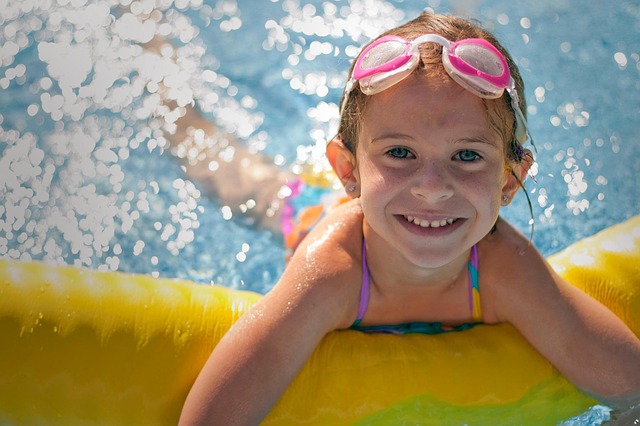It’s spring! Summer is soon approaching and school will be finished for the season. Ontario is blessed with a multitude of fresh water lakes and rivers. Families of all sorts will be spending time at, on or near the water. There are a number of things parents must do to keep the kids safe in the water.
The most important thing is teaching your kids to swim. Please remember, that learning to swim should be an encouraging and rewarding experience for both students and teachers.
The age to start lessons is debatable. Experts indicate that starting swimming lessons at 4 to 5 years of age can be beneficial (kids won’t really become competent swimmers until age 6 or 7). The Canadian Pediatric Society (CPS) indicates that children less than four years of age:
• do not have the developmental ability to master water survival skills and swim independently, and
• aquatic activities and swimming programs for these children should focus on building confidence and educating parents regarding water safety.
The CPS also recommends that swimming instruction should be carried out by trained instructors in pools that comply with current standards for design, maintenance, operation, and infection control (to reduce the risk of hepatitis A, gastroenteritis, skin infections, etc.).
Swimming lessons for ages 4 to 5 years who have not had experience in the water, should concentrate on getting the child comfortable. A parent may be able to take part in their first class to make the transition easier. In the shallow water, they should be able to learn how to float independently, submerge their head under the water for five to ten seconds, go from a standing to a swimming position without assistance, glide through the water, and use coordinated kicking and arm movements. They should learn water safety as well as water skills.
For years 6 and up, an older child can hold their breath for longer periods of time, swim underwater, and retrieve objects at the bottom. They will be able to jump into the water and resurface on their own. They can start learning all of the swimming strokes, including the breast- and backstroke. Their greater endurance will allow them to swim longer distances. At this point, you don’t have to be in the water with your child, but you still need to supervise pool activities, as they might overestimate their abilities.
Here are some safety know-how tips for time spent in the water:
• Have an adult watch all water activities. Even a good swimmer can drown.
• Make it a rule that your children can swim only when an adult is present, and encourage them to always swim with a buddy.
• Teach them to dive only when an adult is watching and the water is deep.
• You should be extra vigilant at the beach or a lake. A child’s swimming skills in a pool don’t necessarily translate to open water.
• Always make your children wear life jackets when boating or waterskiing, even if they can swim.
As a private English teacher and tutor I look forward to spending time with my students, whether it is over the summer or during the school year.
Sources: http://www.cps.ca/, http://www.parents.com, http://teachyourkidstoswim.com






